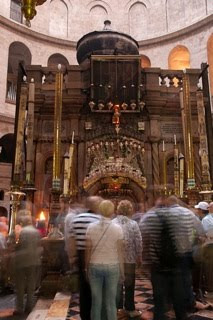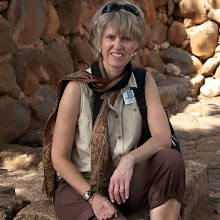The Church of the Holy Sepulcher, Old Jerusalem.
Tradition holds it is built over the site of Golgotha and the tomb of Christ. It appears this has been an honored Christian site since before 100 AD. The first church here was built in the time of Constantine (later 300's). Much of the current building was built in the time of the Crusaders in Jerusalem (1095-1187). There are currently 6 main denominations that reside on this property: Greek Orthodox, Catholic, Arminian, Coptic, Ethiopian Orthodox and Syriac Orthodox, each with various chapels, and all part of the history of this site.
Courtyard and Entrance.
Stations 10-14 of the Stations of the Cross are inside the church.
Orthodox lanterns and mosaics of Jesus in prayer at Gethsemane and the betrayal of Judas
Beautiful mosaic on the pillars near the Altar of the Crucifixion.
The 11th Station with a mosaic of Jesus being nailed to the cross.
The 12th Station, the Orthodox Chapel at the place of the death of Jesus. The Altar of the Crucifixion is built over Golgotha. The rock can be seen through the glass case on either side of the altar. In the center under the altar is a silver disc marking the place the cross of Christ is believed to have stood.






























